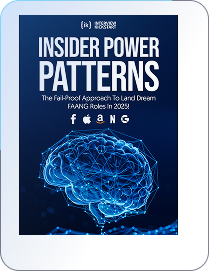The importance of knowing what type of T SQL interview questions to expect for a SQL developer preparing for a T SQL interview cannot be overstated. T SQL, or Transact Structured Query Language, is a SQL extension supported by Microsoft SQL Server and Sybase ASE. This article includes sample T SQL interview questions that will assist and direct you in your T SQL interview preparation.
If you are preparing for a tech interview, check out our technical interview checklist, interview questions page, and salary negotiation ebook to get interview-ready! Also, read Amazon Coding Interview Questions, Facebook Coding Interview Questions to Nail Your Next Interview, and Google Coding Interview Questions for specific insights and guidance on Coding interview preparation.
Having trained over 9,000 software engineers, we know what it takes to crack the most challenging tech interviews. Since 2014, Interview Kickstart alums have landed lucrative offers from FAANG and Tier-1 tech companies, with an average salary hike of 49%. The highest ever offer received by an IK alum is a whopping $933,000!
At IK, you get the unique opportunity to learn from expert instructors who are hiring managers and tech leads at Google, Facebook, Apple, and other top Silicon Valley tech companies.
Want to nail your next tech interview? Sign up for our FREE Webinar.
In this article, we’ll learn:
Let us look at some sample T SQL interview questions and answers for fresher and experienced developers to get you started:
Q1. What is the max number of rows we can construct by inserting rows directly in the VALUE list?
The maximum number of rows we can construct by inserting rows directly in the VALUE list is 1000.
Q2. What are all the indexes we can have in a table?
We can have a single Clustered Index, one or more nonclustered indexes, unique index, filtered, XML, spatial, etc.
Q3. What is the maximum number of nonclustered indexes we can have in a table?
We can create, at max, 249 nonclustered indexes in a table.
Q4. Define the Scope Of A Temporary Table.
The Scope Of A Temporary Table is only limited to its session.
Q1. State the default isolation level along with the highest and the lowest.
The highest isolation level is SERIALIZABLE, the lowest isolation level is READ UNCOMMITTED, and the default isolation level is READ COMMITTED.
Q2. Name the types of temporary tables in SQL Server.
Temporary tables are of three types: Local temp tables (#), Global temp tables (##), and Table variables (@).
Q3. Name the necessary parameters that must be passed with a raiseerror statement?
The necessary parameters that must be passed with a raiseerror statement are message _id/message_str, severity, and state.
Here are some frequently asked T SQL interview questions to help you prepare for your tech interview:
Q1. What is T SQL?
T SQL, or Transact Structured Query Language, refers to a set of extensions to SQL that add features like transaction control, exception handling, error handling, row processing, etc., supported by Microsoft SQL Server and Sybase ASE.
Q2. Differentiate between SQL and T SQL.
SQL, or Structured Query Language, operates on sets. At the same time, Transact SQL or TSQL is a proprietary procedural language used by MS SQL Server and implements UPDATE and DELETE differently compared to SQL.
Q3. Differentiate between PL SQL and T SQL.
PL SQL has SQL embedded and is a procedural programming language. T SQL is a set of procedural extensions for SQL used by MS SQL Server.
Q4. Is T SQL difficult?
No! T SQL is easy to learn. For developers, learning the syntax is most of the battle.
Q5. Is T SQL ANSI compliant?
No. As a proprietary form of SQL used by Microsoft SQL Server, T SQL includes special functions like date, cast, convert, etc., which are not included in the ANSI standard.
Whether you’re a coding engineer gunning for a software developer or software engineer role, a tech lead, or you’re targeting management positions at top companies, IK offers courses specifically designed for your needs to help you with your technical interview preparation!
If you’re looking for guidance and help with getting started, sign up for our FREE webinar. As pioneers in the field of technical interview preparation, we have trained thousands of software engineers to crack the most challenging coding interviews and land jobs at their dream companies, such as Google, Facebook, Apple, Netflix, Amazon, and more!
Attend our free webinar to amp up your career and get the salary you deserve.

693+ FAANG insiders created a system so you don’t have to guess anymore!

100% Free — No credit card needed.

Time Zone:






Get your enrollment process started by registering for a Pre-enrollment Webinar with one of our Founders.

The 11 Neural “Power Patterns” For Solving Any FAANG Interview Problem 12.5X Faster Than 99.8% OF Applicants
The 2 “Magic Questions” That Reveal Whether You’re Good Enough To Receive A Lucrative Big Tech Offer
The “Instant Income Multiplier” That 2-3X’s Your Current Tech Salary

The 11 Neural “Power Patterns” For Solving Any FAANG Interview Problem 12.5X Faster Than 99.8% OF Applicants
The 2 “Magic Questions” That Reveal Whether You’re Good Enough To Receive A Lucrative Big Tech Offer
The “Instant Income Multiplier” That 2-3X’s Your Current Tech Salary
Just drop your name and email so we can send your Power Patterns PDF straight to your inbox. No Spam!
By sharing your contact details, you agree to our privacy policy.
Time Zone: Asia/Dhaka

We’ve sent the Power Patterns PDF to your inbox — it should arrive in the next 30 seconds.
📩 Can’t find it? Check your promotions or spam folder — and mark us as safe so you don’t miss future insights.
We’re hosting a private session where FAANG insiders walk through how they actually use these Power Patterns to crack interviews — and what sets top performers apart.
🎯 If you liked the PDF, you’ll love what we’re sharing next.
Time Zone:

